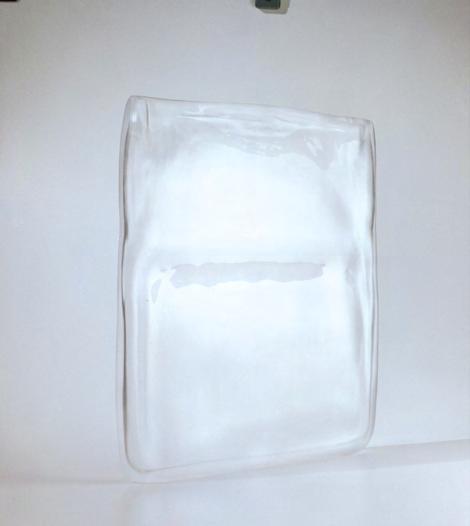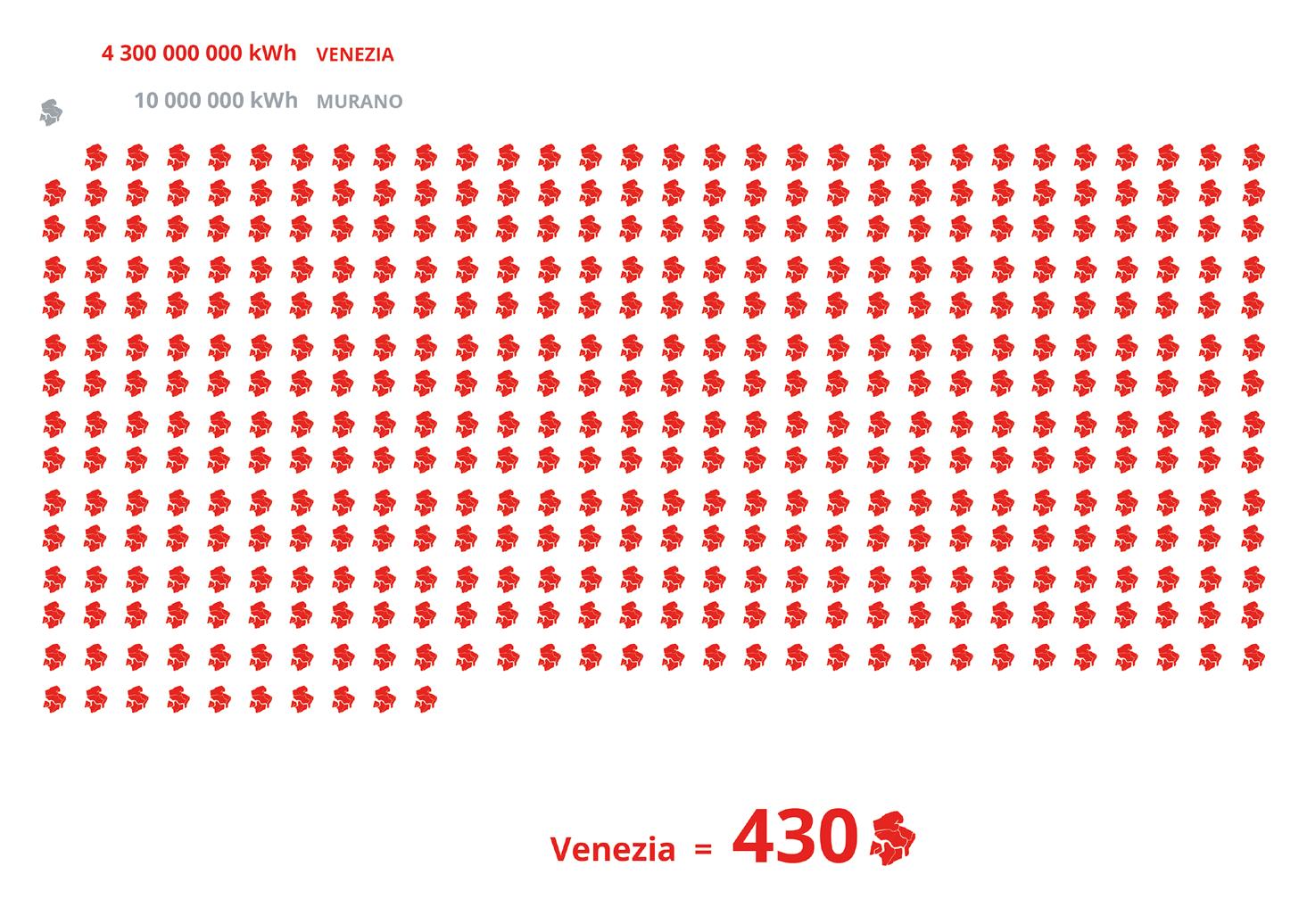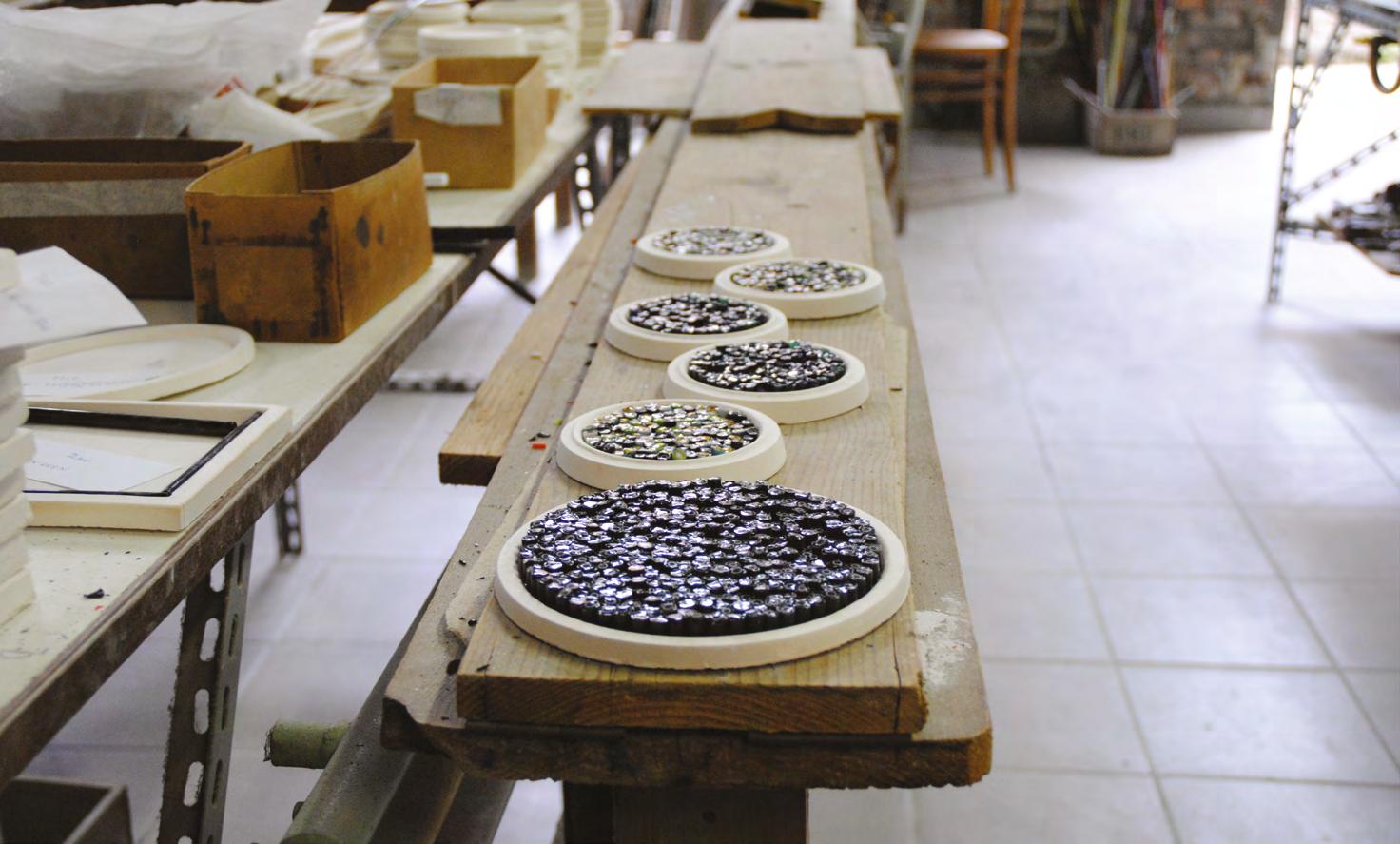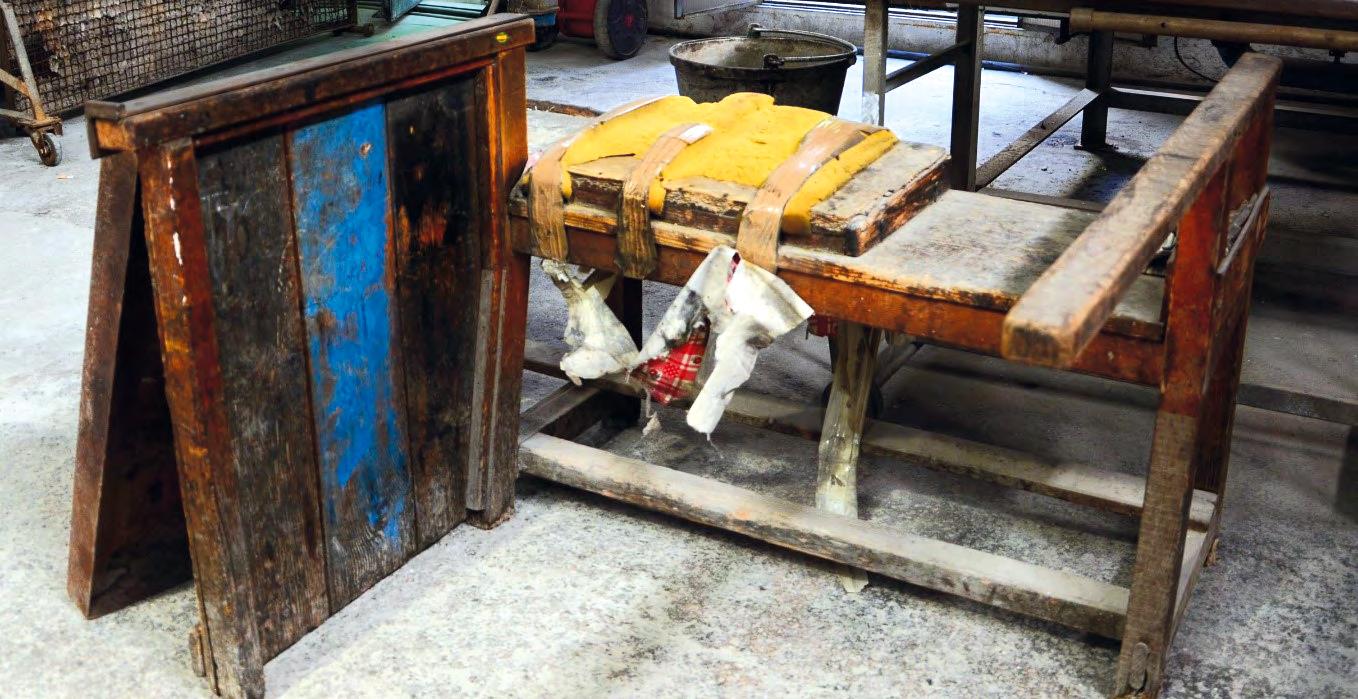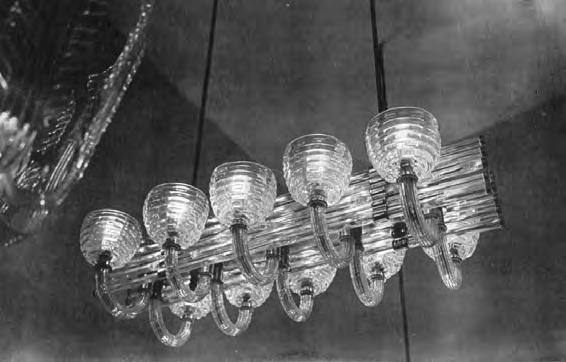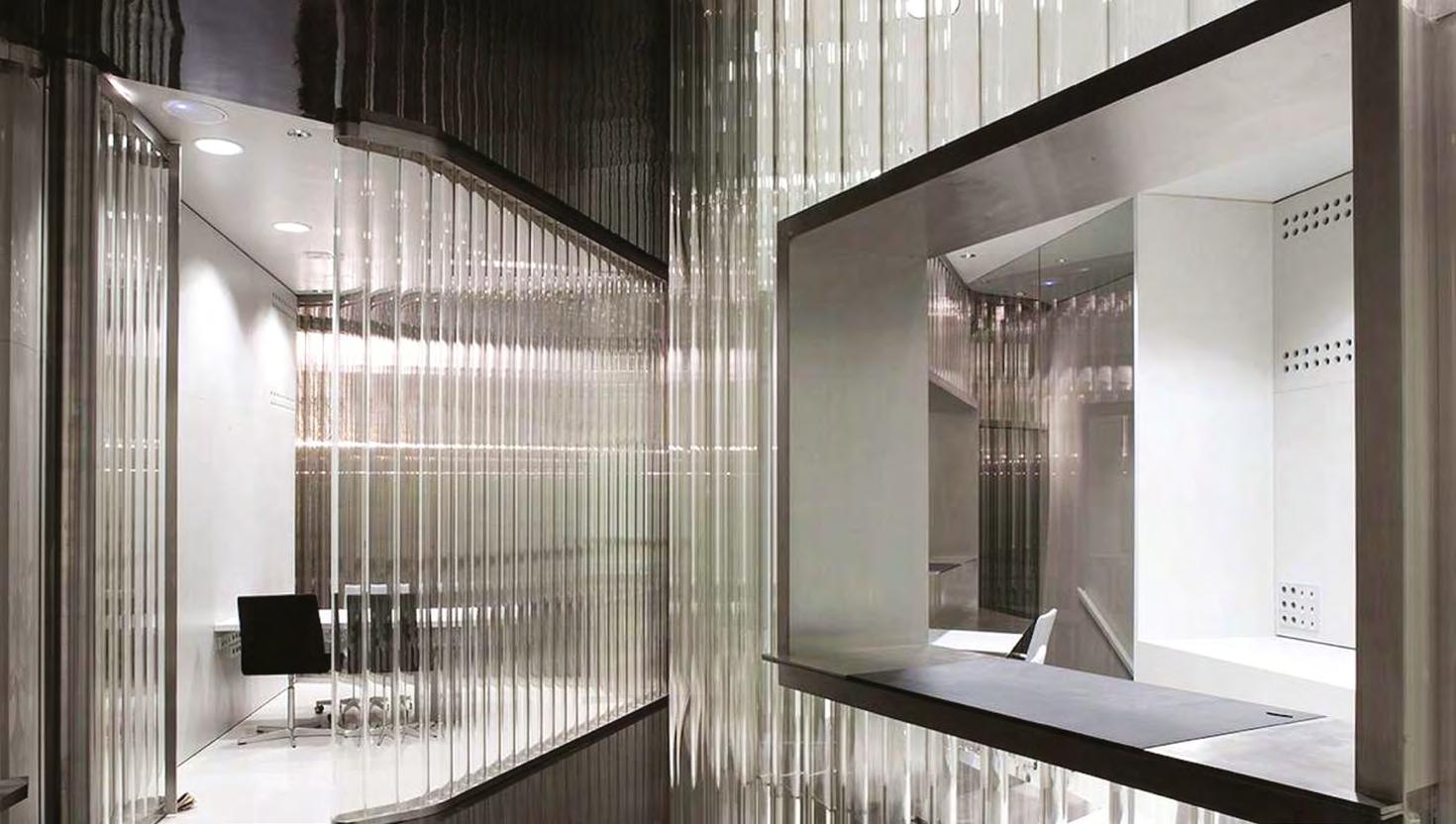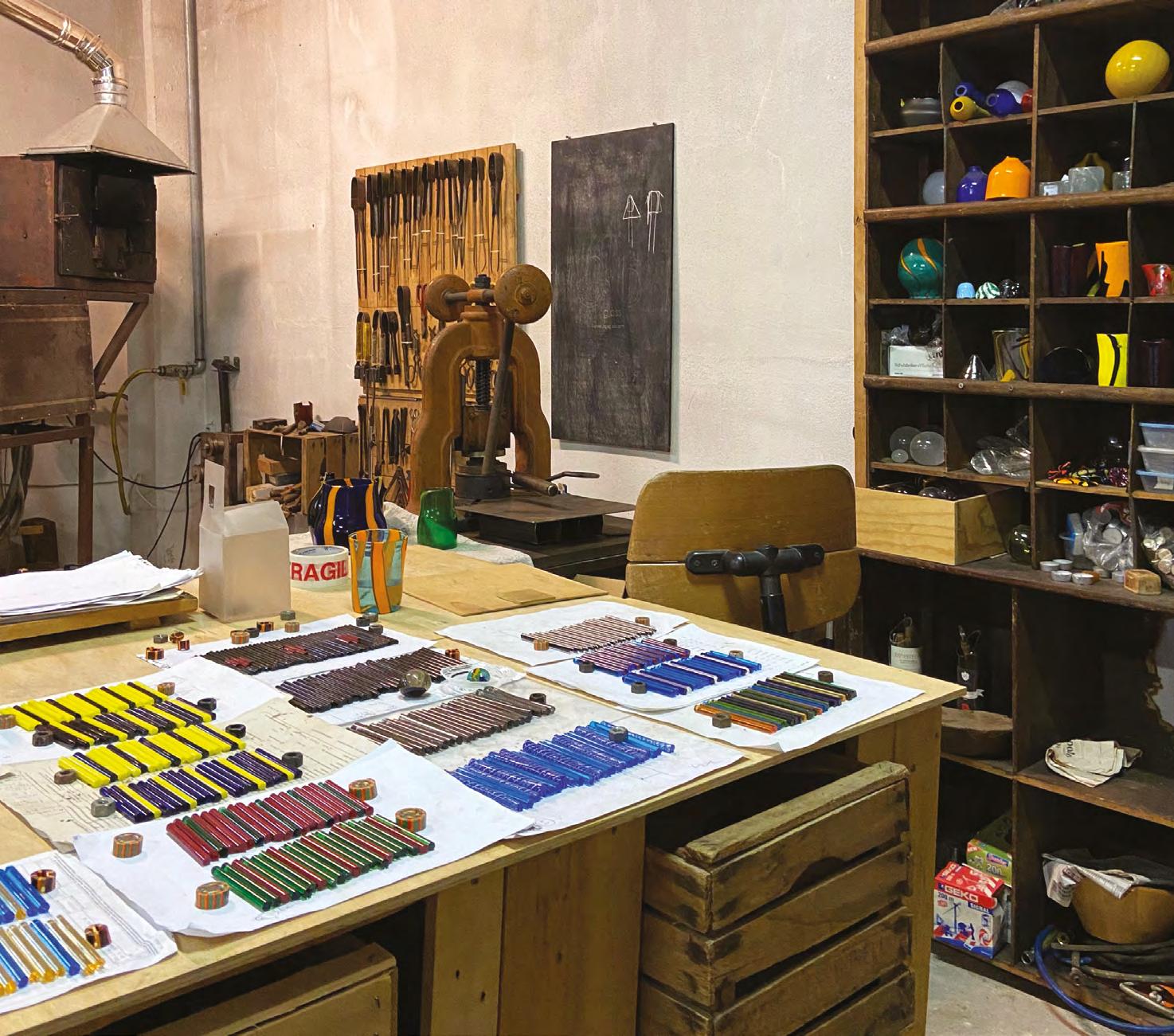
16 minute read
Systemic reuse models for sustainable glass packaging design and innovation
CRISTINA MARINOA, PAOLO M. TAMBORRINIA,B, LAURA MIOTTOC, GIULIA FERRONATOC
KEYWORDS: PACKAGING DESIGN, SYSTEMIC APPROACH, REUSE MODEL
The Italian glass packaging industry is in first place in Europe with 21.3% of production value. It has 14 companies with 39 factories, 7,800 employees and a growing annual turnover of 2.4 billion euros. This trend of production preserves, on the one hand, a good synergy concerning the recycling process, but at the same time, it needs to reduce environmental impacts through reuse practices. This research and analysis work was carried out in collaboration with a company that designs and produces glass packaging, focusing on and evaluating the current reuse and returnable-empty models, outlining the opportunities for a transition towards systemic business that stimulates innovation in new sectors. Subsequently, through a researchthrough-design approach, a second concept phase defines which guidelines to design packaging within returnable vacuum systems in new sectors and which strategies are feasible to start a transition.
A Department of Architecture and Design, Politecnico di Torino, Italy. B Department of Engineering and Architecture, University of Parma, Italy. C Marketing and Communication, Verallia, Italy.
Introduction
The Italian glass packaging industry is today in first place in Europe with 21.3% of production value. It has 14 companies with 39 factories, 7,800 employees and an annual turnover of 2.4 billion euros. The growing trend reported by sector association studies (Feve and Weber Shandwick, 2020) predicts an increase of over 500 jobs between 2020 and 2024, with a production of 500,000 tonnes of glass packaging. This continuously increasing production as early as 2019 indicates virtuous glass-environment ‘synergies’. Indeed, data published by the Close the Glass Loop platform (Feve, 2019) confirm that glass collection and recycling increased in 2019 to an average rate of 78%, up 2% from the previous year’s results. These figures, encouraging for the multi-stakeholder platform that has set itself the goal of achieving a 90% post-consumer glass container collection target by 2030, ensure that a large proportion of packaging glass is correctly recycled in the glass production cycle.
This industry overview shows how, over the years, the environmental footprint of this material has been increasingly reduced, so much so that 85% of Italian consumers consider it the best packaging (Feve, 2019). Compared to 40 years ago, producing bottles and jars has reduced energy requirements by 50% and emissions by 70%. The recycling rate for glass reached 76.3% in 2018 (+6.6% compared to the previous year). Thanks to recycling in 2018, 3,395,000 tons of virgin raw materials, 320,000 tons of energy, and 2,082,000 tons of CO2 were saved. In 2018, 85.9% of households sorted glass (10 years earlier, it was just over 50%). Bottles and jars then underwent a drastic ‘slimming down’: a bottle of sparkling wine since the 1990s, for example, has decreased in weight by 18%, a jar of baby food by 13% and an oil bottle by 12.2%.
Glass is the only material that meets the definition of a ‘permanent’ (Larsen et al., 2009). This is because: • it maintains its chemical and physical features unaltered over time; • collection systems are centralized for an effective recycling, treatment and reuse strategy; and • reuse is permitted an infinite number of times.
This virtuous process thus saves energy for production from virgin materials, reduces the impact of glass on the environment and creates new entrepreneurship (Cocking, 2003).
Nonetheless, although the glass industry, and the glass packaging industry in particular, already applies circular economy principles (e.g. with water and minor with beer packaging), not all product categories are currently in these processes, and the circular economy approach is sometimes limiting concerning the urge to close the process on itself.
In particular, the circular economy applied to glass is strictly linked to the manufacture of products and the concept of the life cycle of industrial
processes (Verallia, 2022). Instead, this research uses Systemic Design as a methodological approach (Barbero and Tamborrini, 2015). An innovative design practice developed to apply design knowledge to systemic problems with the aims of co-designing products, systems, and policies for better and sustainable services (Jones, 2014).
Systemic design methods and principles enable the human-centred design of complex, multi-system and multi-stakeholder services and programmes by connecting different cycles and creating open systems sustained by relationships and connections between local realities.
With this approach, the main aim of this research and analysis work carried out in collaboration with a company that designs and produces glass packaging is to focus on and evaluate the current reuse and returnableempty models, outlining the opportunities for a transition towards systemic business that stimulate innovation in new sectors1. Subsequently, through a research-through-design approach, a second development phase defines which guidelines to design packaging within returnable vacuum systems in new sectors and which strategies are feasible to start a transition.
Methodology
For future sustainability, it is necessary to understand the different and complex challenges surrounding glass reuse: from changing consumer behaviour to product design trends, from logistics for glass collection and cleaning to the development of new business models within the different political contexts of the target markets. This investigation, thus guided by a two-track approach, on the one hand, systematises research for means to reduce emissions through alternative business models and, on the other, identifies the most compelling features and practices to reuse glass packaging.
The broad inquiry subject, including different product categories and production formats, underwent the first skimming through selecting some product categories. The selection was made by taking into consideration both qualitative aspects for which product categories not yet involved in returnable vacuum systems were preferred, and quantitative aspects that, concerning the identified category, considered the possible collection volumes and a balance between revenues and investments about the business model, at first linear, then systemic.
The theoretical framework, considering the complexity of the topic, is based
1 This research work was conducted within the Design 1 laboratory of the Master Eco Packaging Design – Systemic Innovation Design for the packaging project of the Politecnico di Torino in collaboration with Verallia. The Master is a one-year training course that deals in an interdisciplinary way with the strategic and project aspects of design, communication and sustainability for the packaging project in collaboration with Fondazione Carta Etica. The students involved in the research were: Marta Caruso, Marika Baresi, Anna Rita Asaro, Irene Rubino, Ginevra Grisotto, Margherita Viràg Sartori, Natalia Cito, Andrea Guidi, Ruben Faraci, Elisabetta Sechi, Maria Chiara Tortia.
on a “mixed” approach. It proposes the use in the first instance of an analysis of current models and, in the second phase, a research-through-design approach aimed at defining design guidelines for reusing glass packaging.
In order to explore a business model for reuse, it was necessary to know in-depth the challenges and characteristics of the main stakeholders in the supply chain. Therefore, the basic research integrated concepts, experiences, and interventions not only from the glass packaging design field but also from the business sector, whose models are examined in the analysis. For this reason, we involved several brands that accompanied the research project and returned a helpful transdisciplinary approach to thinking in terms of open systems. Specifically, the stakeholders that have been involved were: an online shopping brand, a food delivery service, a mineral water brand, a producer of food packaging caps, an organic supermarket chain and a producer of food packaging labels.
This transversal involvement of several realities was fundamental to treating the individual production systems as complex ones with complementary and symbiotic activities rather than disconnected entities. In this way, the research process could benefit from sharing resources, knowhow and technological skills.
The second part, dedicated to applied research where concept
Fig. 01 Example of the linear model analysis of the wine q-commerce system. Courtesy of the authors
development took place, was supported, and verified by the glass packaging company, which provided feedback on the prototypes’ suitability concerning innovative business models.
Therefore, the research methods involved the analysis of several case studies divided into the following categories: large-scale retail purchasing models, large-scale retail distribution platforms, traditional e-commerce and quick commerce, and proximity commerce.
Then, four innovative business models were developed, each assuming a specific product category. Bottles of oil, beer, wine, fruit juices and jars for jam and ready-to-eat products were analyzed. A user with different needs was traced back to each product category to define better the aesthetic-functional characteristics of both the model and the product under consideration. Following the validation phases by the experts, the data collected were synthesized into some guidelines for the design of glass packaging capable of adapting to the returnable vacuum models.
Analysis of existing business models
The first part of the research provides a basic description of the functioning of the different models and distinguishing implementation issues. The models analysed fall within the following categories: retail purchasing models, retail distribution platforms, traditional e-commerce, quick commerce and proximity commerce (Barbero and Pereno, 2020).
The analysis summarised in Table 1 shows that each model has peculiarities concerning timing and supply. The transport systems and logistics platforms differ mainly in the distribution over the territory and the size of the warehouses. If storage and timing are two factors that specifically impact the user experience, transport systems, handling dynamics, and the need for large or small warehouses are critical points for the design of returnable collection systems.
Figure 1 exemplifies a scheme for analysing the linear system of a quick commerce model, highlighting critical points. All the other models were investigated using the same method; the results of the comparative analysis are summarized in Table 2.
Recurring criticalities include the premature disposal of glass packaging, often still intact, and the over-packaging of the product for further protection. On the other hand, opportunities enclose leveraging local relationships, exploiting empty trips by riders, warehouses and points of sale throughout the territory to facilitate collection operations on the one hand, and container storage on the other.
However, a gap in the analysis was found in the lack or reduced availability of external washing and sterilisation services. The latter would represent a costly investment for companies to start an internal returnable vacuum cycle but also a pivotal point to establish new entrepreneurship around reusing glass packaging.
Traditional Commerce
Time to shop Self-service
Offer Wide offer E-commerce Quick commerce
2-3 day delivery Less than 1h delivery
Limited offer Small offer Proximity commerce
Reservation of grocery
Small offer
Transport
Support platform Private vehicles Road transport Bike transport Private vehicles
Superstore Mega warehouses Warehouse / local stores Local stores
Tab. 01 Business Model Analysis categories.
Designing innovative business models for glass packaging reuse
The second part focuses on packaging reuse solutions in business-toconsumer (B2C) and business-to-business (B2B) applications. Both design directions have been retained because, although there are many opportunities for reuse in business-to-business (B2B) applications, the latter are generally better understood and adopted at scale. Therefore, part of the research aimed to identify sectors that do not currently adopt reuse models, which could also open up to reuse models, especially to consumers.
For this reason, before conceptualising a functional reuse model for the glass packaging industry, a case study review was interposed on currently advantageous reuse models, both environmentally and economically. Such models, classified in the Ellen MacArthur Foundation’s Reuse report (2019), can be categorised as: • Refill at home: where users refill their reusable packaging at home; • Refill on the go: where users refill their reusable containers away from home (e.g.at, an in-store dispensing system); • Return from home: packaging is picked up from home by a pick-up service (e.g. by a logistics company); • Return on the go: users return the packaging at a store or drop-off point (e.g. in a deposit return machine or mailbox).
Based on the analysis of the case studies, some of the strategies identified appear to be ill-suited to the world of glass packaging, so it was decided to opt for door-to-door and out-of-home return models. A door-to-door collection is an option that, although it can overcome certain limitations, as far as recycling is concerned, from a system perspective, is more costly due to the weight of the product itself and the emissions generated during transport. However, it becomes disadvantageous if collection volumes are not high and the consumption of specific product categories infrequent.
The analysis, therefore, led to the exclusion of product categories with sporadic consumption and instead to a preference for local productions, with low volumes but high networking potential in the local area, and categories that cannot do without glass packaging at present.
An example of a new business model which comes from the intuition to systematise similar packaging is the ‘Elis’ project, which is based precisely on the creation of added value through the collaboration of existing and geographically close players. The project proposes the development of a new range of hybrid bottles. Also, it connects oil mills and microbreweries that, despite being realities of limited size and production scale, are born with the concrete intention of being sustainable and therefore need suitable containers to communicate their mission.
The design of this model is aimed at both B2C and B2B users. This way, the system can optimise the delivery trip for vacuum collection by consumers and companies by fitting both consumption times and collection volumes.
Similar projects also targeted small local producers in the concept phase by leveraging proximity commerce as a collection point. Other projects, referring to wine or ready-to-eat products, have optimised the reduced volumes of collected packaging by redistributing it to micro and mediumsized enterprises that do not need large orders and can quickly source from third parties.
Finally, some reflections concerning the conceptualisation of new models emerge about the colouring of glass packaging produced mainly in three colours: clear, green and amber. Undoubtedly, although mixed scrap can only be used for the production of green glass, the production of clear or flint glass and, to a lesser extent, amber glass requires a scrap of the same colour. Therefore, mixed colours can lead to overcapacity for green glass furnaces (Testa et. al, 2017), and the collection of the products should take place in a differentiated manner. This point, in particular, meant that colour was a characteristic feature of packaging explicitly designed for inclusion in unique returnable vacuum models at the expense of clear glass.
Logistics Criticalities User Criticalities
Commerce Lack of door-to-door pick-up; packaging management delegated to the municipality Autonomous time and vehicles for grocery shopping, fatigue; storage space needs Opportunities
In-store collection possibilities, user incentives, warehouse space, suppliers network
E-commerce Excessive consumption during transport Delivery/collection booking Multiple productions/ systems connection on territory
Q-commerce Rider’s empty trips Unclear disposal process Take advantage of empty trips and warehouse points
Packaging features Premature recycling of an undamaged packaging, risk of breakage during handling Use of bubble plastic wrap, overpackaging and frustration Stackability, adaptability to multiple production systems, standardization
Tab. 02 Criticalities and Opportunities of Linear Business Model.

Fig. 01 Example of systemic model for oil and beer business – B2C and B2B. Courtesy of the authors.
The study outlines the following guidelines concerning the design of glass packaging for the returnable vacuum: • Standardisation: although standardisation is often interpreted as a flattening of the creativity and uniqueness of the individual product, in the context of returnable packaging, standardising the aestheticfunctional characteristics means making the system adaptive to multiple business and production systems. • Communication of sustainability: the transparency of glass, a characteristic that has long remained attributable solely to this material, is a fundamental value category in returnable packaging: communication of the sustainability and quality of the product contained in glass packaging is often attributed to this hygienic-functional, and aesthetic-emotional parameter. In this specific case, however, the systems designed wanted to focus on the characteristics of dark glass: more recyclable, less treated, this glass is more in keeping with the sustainability characteristics not only of the product but of the entire system. A second way to communicate the system’s sustainability is also through the label. Strategies of this type have highlighted the need for labels that are not intrusive to the packaging but can also enhance the multi-cyclic packaging system through the materials used.
• Stackability and optimisation of transport: the concepts developed also focused on the formal characteristics of the packaging in terms of both weight and volume. In addition, jars and entire product families were designed to be stackable and facilitate transport operations in quick commerce systems and crates. The latter is suggested to be equipped with intelligent systems for monitoring returnable cycles.
These guidelines, drawn up for the reuse of glass packaging, allow for specific improvements to the product as a result of a systemic analysis that addresses future needs by adopting sustainability criteria throughout a product’s life cycle, from conception through transport to final disposal; considering the needs of the product at all stages of the process and the co-responsibility of all the players involved in the system. A system that is made up and has to consider manufacturers, packaging converters, user companies, associations and consortia, etc., and who must not forget the end-users who play a decisive role in the purchasing, consumption and postconsumption phases. In this way, the packaging results from an integrated set of choices made by the plurality of actors, each of which plays a specific -direct or indirect- role in its definition.
Conclusion
To conclude, this research project, which applies the systemic approach to the glass packaging sector to study innovative business models based on reuse, has shown how tangible effects on the product exist if the entire design process is structured following a holistic approach. The range of products designed responds to specific needs that do not derive from market research or the requirements of a single sector but address the real needs that have emerged from the paradigm shift they apply in an interconnected manner. The project activates systemic value chains thanks to an in-depth multistakeholder analysis that integrates different actors and sectors, enhancing local production and connecting the actors of a territory, standardising where necessary the product but considering the reality of local needs to activate returnable vacuum strategies. In this way, the research shows that there is a space to open up different scenarios, not only at the system level but also at the product design level, which must prepare itself to respond to sustainability challenges, sometimes going beyond traditional aestheticformal characteristics. The project then highlights the scalability of the multilevel approach to the glass packaging industry. It proposes to open up to other product and production categories to implement the value chain.
References
Barbero, S., Pereno, A. (2020). Packaging Design in the Digital Age: A systemic approach to e-commerce. Milano: FrancoAngeli. Barbero, S., Tamborrini, P. (2015). Systemic Design goes between disciplines for sustainability in food processes and cultures. In AA. VV. (ed.), Sustainable Food Planning Conference. Torino: Proceedings of the 7th International Aesop, pp. 7-9. Cocking, R. (2003). The challenge for glass recycling. In Sustainable waste management. London: Proceedings of the international symposium held at the University of Scotland Dundee, pp. 73-78. Ellen MacArthur Foundation (2019). Reuse – rethinking packaging (online). In https://ellenmacarthurfoundation.org/reuse-rethinking-packaging (last accessed August 2022). Feve (2019). Record collection of glass containers for recycling hits 78% in the EU (online). In https://feve.org/glass_recycling_ stats_2019/ (last accessed August 2022). Feve and Weber Shandwick (2020). Packaging & Recycling survey (online). In: https://content.presspage.com/uploads/1081/ feve-packagingrecycling-finalreport-commsapril2020.pdf?10000 (last accessed August 2022). Jones, P. H. (2014). Systemic design principles for complex social systems. In Metcalf, G. (ed.), Social systems and design. Translational Systems Sciences, vol 1. Tokyo: Springer, pp. 91-128. Larsen, A. W., Merrild, H., Christensen, T. H. (2009). Recycling of glass: accounting of greenhouse gases and global warming contributions. Waste Management & Research, 27 (8), pp. 754-762. Testa, M., Malandrino, O., Sessa, M. R., Supino, S., Sica, D. (2017). Long-term sustainability from the perspective of cullet recycling in the container glass industry: Evidence from Italy. Sustainability, 9 (10), 1752. Verallia (2022). Reimagining reuse for the circular economy of glass. Stakeholder Perspectives Series (online). In https://www. verallia.com/wp-content/uploads/2022/03/VERALLIA_WHITE-BOOK_EN_march2022.pdf (last accessed August 2022).

